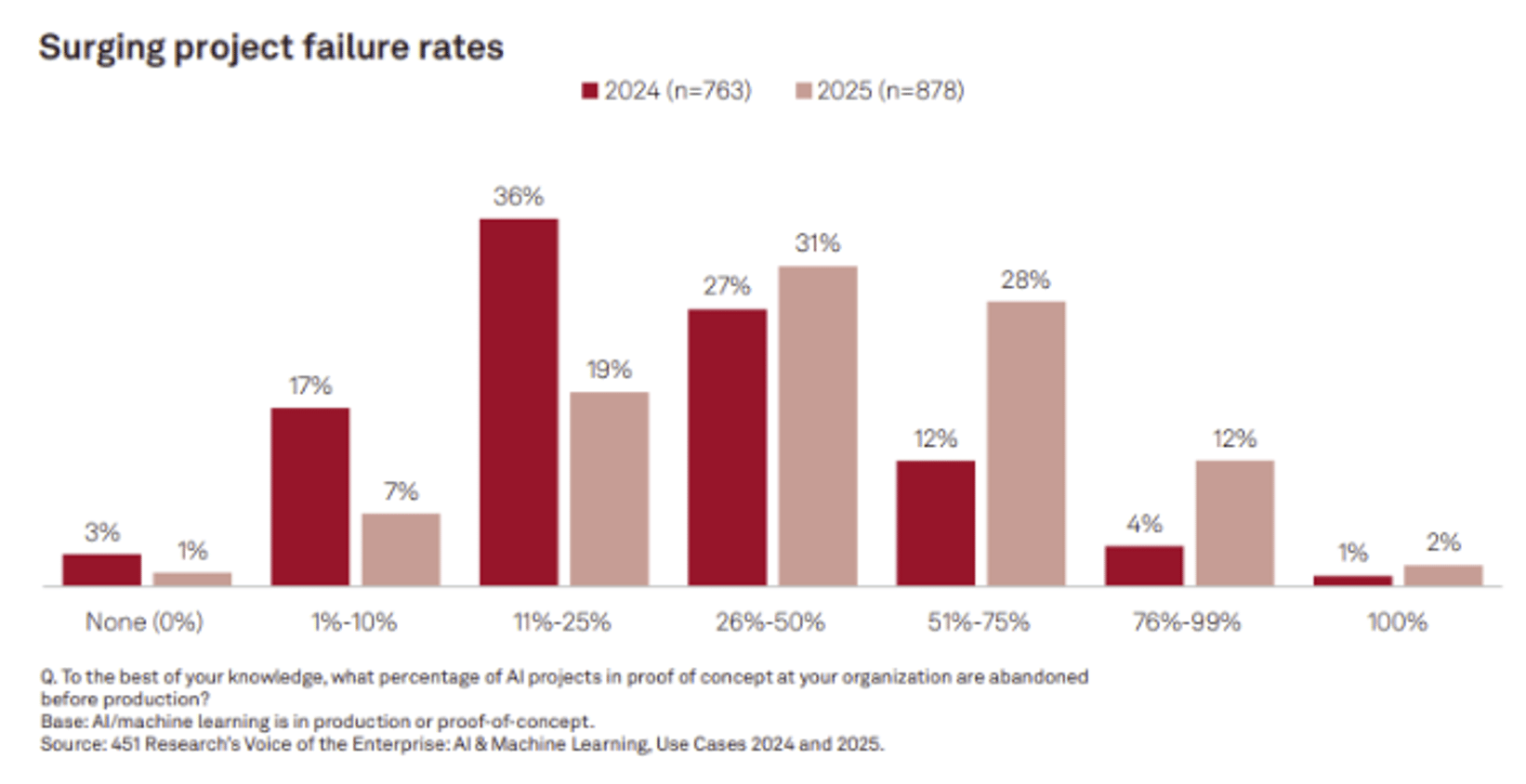Check Your Blind Spots

Your biggest risks may not be what you see but certain things you miss, hidden from view or unnoticed in plain sight causing incorrect assessments, impacting decisions, eroding productivity, undermining trust, and hindering growth.
"Digital transformation isn’t an end goal; it’s a continuous journey." — Brian Solis, Head of Global Innovation, ServiceNow.
Discover Your Blind Spots
You're embracing and implementing new tech and tools looking for the productivity bumps to compete more effectively. You recognise the changes. You're adapting, but not always advancing. Are you missing something?
What more steps can you take to fix it? Customers' changing needs are being prioritised, AI-integrations are on track, you're making decisions as fast as you can. Meanwhile, you may have (temporarily) pushed back cultural aspects and delayed dealing with employee issues to keep projects moving forward.
Where might things be stumbling, stalling, or going sideways?
Digital DNA

Human-centric workforce innovation in the age of AI
workforce and scale your business, navigating the fast-paced
unpredictable marketplace.
Generational EQ

The Future of Work is a system. Key factors' relative importance is evolving with the foundational shifts to more dynamic and complex digitalized marketplace, operating, and working realities. You're on it, just not all of it, yet:
- ADOPTION vs. TRANSFORMATION – Implementing AI tools can be confused with embarking on digital transformation. Tech deployments can block leaders' recognition of the system-wide reinvention needed. Integrations not aligned with operations can amplify dysfunction.
- DECISION VELOCITY – Fast and reactive decisions can be poorly informed and unclear in efforts to make rapid progress. Leaders may not see that quick, centralized, top-down, unchallenged decisions are prone to error. What looks like agility can be patternless chaos.
- TRUST-BASED BOTTLENECKS – Distributed workers are connected cohesively by trust not technologies. Cultural values and relationships can be overlooked by leaders, seen as non-core rather than critical. Trust isn't observed. It must be designed and earned through activities.
- FRAGILE SCALABILITY – Growth can be measured by revenue, reach, and reputation. Leaders may focus on these outputs over building capacity—with flexible frameworks—for sustainable growth. Unless the system and processes scale, you are likely building a house of cards.
- TRANSFORMATION PRACTICE - Digital change initiatives can incorrectly position transformation as projects that launch and end. Leaders miss helping workers accept ongoing change. Efforts can be clustered but ongoing adaptation succeeds over episodic reboots.
Over the next newsletters, I’ll unpack each one, starting below with #1 which is already playing out in your transformation roadmap, your AI investments and rollouts, and how your teams are able to utilize new tools effectively (or not).
Distributed Works

#1: Be Intentional About AI
You're on the path to Digital Transformation 2.0. Or are you? Your managers are all over AI. Tools are integrated. Some folks have been trained, but productivity gains are spotty and inconsistent. Some parts of the organization aren't up to speed. Operations get bottlenecked there. Those teams need more AI skills—there are plans to hire replacements to keep making progress. Actually, wait!
Digital transformation needs sufficient understanding, a coherent, company-wide strategy — with AI as an integral part, singular ownership, and C-suite coordination [see Appoint a Chief Shift Officer], plus workforce awareness and upskilling. AI-related risks are high when deployed without intention resulting in:
- Multiplied friction: If workflows aren't updated and well-designed, AI magnifies handoffs, latency, and misalignment with daily operations.
- Fragmented intelligence: If tools don't talk to each other, insights can't be shared for unified understanding and coherent decision flow.
- Eroded trust: If employees don't find a tool helpful or seamlessly integrated across operations, they may ignore or subvert it.
- Wasted investment: If tools aren't used effectively after costs to develop, launch, integrate and train, ROI is hard to achieve later.
- Competitive disadvantage: If other companies are managing system-level integration, they can get ahead even with less powerful tools.

Here's why intention matters:
- 95% of enterprise GenAI implementations show no measurable impact on P&L. Many projects are disconnected from workflows, context and operationally misaligned [MIT State of AI in Business, July 2025].
- 42% of firms scrapped most AI initiatives before reaching production versus 17% in 2024 [S&P Global Market Intelligence, March 2025].
- #1 barrier (33%) to digital effectiveness were cultural and behavioral challenges self-reported during Digital Transformation 1.0 [McK 2017].
- 66% of companies do not provide integrated user experiences for the 897 average number of applications they use.
- 95% of IT leaders report facing challenges when integrating AI into existing processes [Mulesoft, 2025 Connectivity Benchmark Report].
- ~5x as many risks were presented as occurring after the AI model has been trained and deployed (62%) than before deployment (13%) [MIT, The AI Risk Repository].
"Many risks are presented as being about AI, while in reality the mitigation of these risks requires a human doing something differently during conceptualisation, design, development, governance, or use." — MIT, The AI Risk Repository, March 2025.
WHAT YOU CAN ACHIEVE
I’m hearing many senior leaders saying the same thing: their teams are talented but tired, constantly pulled in different directions, juggling priorities, and out of sync with each other.
That’s what Empowering High-Performing Teams can help you change.
You’ll learn and practice how to: • Reconnect people around shared purpose to make informed decisions faster • Create explicit communication norms that reduce friction and rework • Foster accountability that drives strategic results without burnout
Leaders who’ve taken my courses tell me they change their daily reality. Robert, a CEO, told me: “It reminded me to lean in, listen, and validate perspectives — my connections are stronger, and so are my results.”
As trust rises, momentum builds. Projects finish faster. Teams feel energized.
Scaling Skills-first

Stop the (AI-)Slop!
AI-generated 'slop' that destroys productivity made top headlines [HBR, Sept 2025] recently. Sloppy integration and sloppy inputs easily achieve 'slop' for results. Similarly, AI reflects the integrity of the system it is integrated into. If data is incomplete, workflows are unclear, pipelines are fragile and accountability is diffuse, confusion or dysfunction at scale can easily occur.
The first step of transformation isn't technology--it's preparing your existing work architecture. Monitoring, governance, data quality, and system integration are non-negotiable while shifting to a learning culture to bring everyone along.
Avoiding misdeployment has stimulated a new industry: AI assurance with "companies specializing in securing and controlling AI agents, designing and running pre-deployment tests, and safeguarding systems against unintended or misaligned AI actions." - Esben Kran blog 'The concrete risks of AI misdeployment'.
Intentional AI Audit
- Which processes or decision domains could AI amplify if designed well?
- Where do you already have data flows and velocity—can AI plug in there rather than in disconnected pilots?
- Are your governance, schema, and data models ready to integrate AI outputs consistently?
- Which roles must shift/be created to manage AI workflows end-to-end?
- How do you measure value delivered (not just adoption) — and how often do you revisit that?
"Awareness — not policy — is your first line of defence again AI risk." "Involve people in shaping policies" — CIO.com, 'Your Biggest AI Risk Might be that Employees Don't Know They are Using It.' by Arti Deshpande, Robert Stines, Mike Vaughan, Sept 2025.
Who's Doing DT 2.0 Differently?
General Electric - tried to centralize digital/IoT/AI ambitions for DT 1.0 (2015+) under "GE Digital" but spread resources too thin, KPIs were missing/unclear, attempted to add AI/tech to legacy systems vs rethinking work architecture. Now, focused on GE Aerospace's 52k employees, embedding tools, coupling GenAI with internal capability building tied to internal process frameworks. GE Digital is now delivering domain-specific AI/analytics applications, emphasizing lean methodology to clean up processes before greater integration.
Colgate-Palmolive, Sanofi - small-scale transformation with GenAI "extensive experimentation" demonstrating value creation while minimizing risk and creating the foundations for larger scale deployment. Three categories of these transformations: (1) common workflow tasks; (2) business processes; and (3) AI-enhanced products and consumer-facing applications. Piloting in one domain with clear goals, refining, then scaling outward.
JPMorgan, BMW, Duolingo - orchestrating AI integration across governance, people, partnerships, and data. Strong risk or safety controls or high value domains first, then expand with strong feedback loops and cross-functional governance. Human oversight maintains quality for content curation.
Daily Harvest - mitigated 'slop' results from chatbots, now using AI in high-confidence domains (e.g. packaging) where variables are more controllable. Scaling happens when the AI model is stable in that domain.
#1: Be Intentional About AI
Human-centric Leadership Audit

News & Muse

📘 The Worlds I see: Curiosity, Exploration and Discovery at the Dawn of AI - Fei-Fei Li
🗞️ Why AI Projects Fail: The Importance of Strategic Alignment and Systemic Prioritization - core research can offer grounding data.
📹 What if AI Makes Us Less Productive, Cal Newport - we should ask.
🎶 Changes, David Bowie - It's all about transformation!
#1: Be Intentional About AI
#1: Be Intentional About AI
Leaders are under pressure to move quickly, adopt tools, and make progress. However, AI success isn’t about speed — it’s about intentionality and strategic system planning before implementation. It’s about slowing down long enough to redesign how your organization actually works before accelerating again.
Transformation isn’t about the tools — it’s about how you think, decide, and lead differently. I offer insights to uncover blind spots and clarify issues as you make adjustments, and transform your company. Click here to book a 30-minute session.
Check for blindspots regularly - what are you assuming, what don't you see, what might you be missing! See you for Blindspot #2 next week.
Until next time!
Sophie
Scalable strategies. Tactical talk. Workforce transformation.
Human-centric workforce innovation in the age of AI
workforce and scale your business, navigating the fast-paced
unpredictable marketplace.
